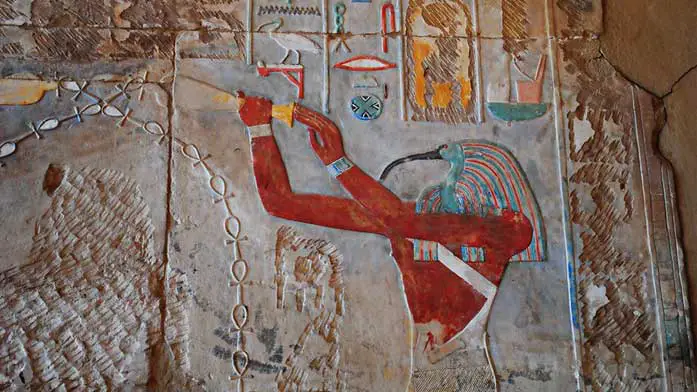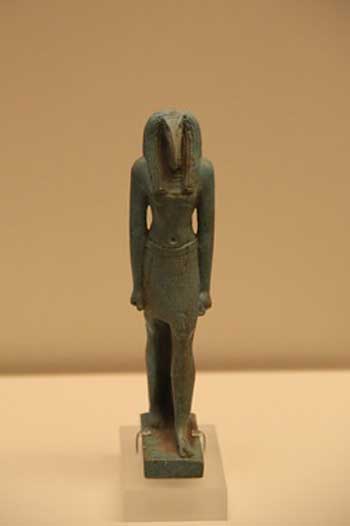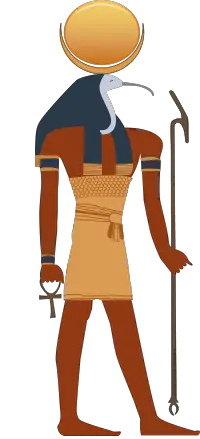Thoth
Among all the Egyptian gods, none was as multifaceted as Thoth. Originally the god of the moon, Thoth was also the god of writing (especially hieroglyphics), science, magic, and judgment (among other things). His parentage and origins are many and contradictory.
Name and Origins
The myths concerning Thoth's origins are varied. In one version, he created himself before creating the universe, placing him on a level with Atum and Ra. He came into being sitting on a lotus flower in the primordial waters. In ibis form, he laid an egg that subsequently became all the matter in the universe. In other myths, he was brought into being by the speech of Ra. In still others he was born from the skull of Seth or by an unnamed creator god during a moment of grief. These myths were different based on region, time, and the aspect of Thoth being emphasized.
There is one theory that Thoth began not as the moon god, but as a funerary god. This would put him on par with Osiris, Anubis, and Ma'at. His place of origin was either Upper or central Egypt.
Attributes
Thoth was considered the scribe and messenger of the gods. In these roles, he invented writing (especially hieroglyphics). He was also an astrologer, mathematician, scientist, architect, and expert in both human and divine laws. In his capacity as one of the most learned gods, he was also the god of knowledge, magic, and alchemy.
However, his foremost attribute was as a lunar god. It is believes his name meant "he who balances." As the moon, he balanced the night against the day, the sun with the moon. As a result, he is often depicted with the lunar disk on his head. The idea of balance is also present in his role in the afterlife. His daughter, Seshat, worked with Ma'at, using the divine scales to judge the souls of the dead. As the moon god, he was also in charge of keeping time and marking the change in seasons.

© Navin Sigamany - Thoth at Karnak
Thoth was also given other epithets, including "lord of time" and "accountant of the years." As the moon god, he would have marked the months which were measured by changes to the moon. He was also a god of many names, including Asten, Hab, Khenti, Mehi, and Sheps. As a figure in the sky, he was referred to as the "bull among the stars."
Depictions
Thoth was most commonly portrayed as a man with the head of a green ibis. He held a was-staff in one hand and an ankh in the other. He had the moon disk on his head. In other depictions, he was portrayed completely as an ibis. This was used most often when he was portrayed as the creator god.
Thoth was also often portrayed as a baboon named Aani. Sometimes, the baboon would have a dog's head or face. This form was used when he recorded the results of a heart as it was measured in the afterlife. In these depictions, he is often shown holding a pen and papyrus or a stylus and slate. He would often have the moon disk on his head in this depiction as well.

© Gary Todd - Statue Thoth
Associations
Thoth had close associations with four major gods.
Association with Ra
Ra was considered the father of Thoth in some mythologies. In one myth, Thoth was spoken into being by Ra. This is why Thoth was sometimes given the moniker "god without a mother." Thoth was often depicted standing on one side of Ra's solar barque. He was sometimes called the "heart and tongue of Ra," and it was claimed he invented speech.
Association with Ma'at
Thoth was often considered the husband of Ma'at, the goddess of balance and order. She was the other figure standing next to Ra's solar barque. In the afterlife, she would measure the dead person's heart against that of a feather, and Thoth, as scribe to the gods, would record the results.
Nehmetawy
While little is known of this goddess, her name meant "she who embraces ones in need." In the Hermopolis tradition, she is considered the wife of Thoth. She was a regional deity who was worshipped primarily in central Egypt.
Seshat
Seshat was the child of Ma'at and Thoth. Like her father, she was the goddess of writing, astrology, architecture, and all things that involved measuring. She was present with Thoth, Anubis, and Ma'at when the human heart was measured in the afterlife. Together, Seshat and Thoth were held especially sacred by scribes.
Important Myths
In one myth, Thoth was said to have retrieved the eye of Ra. When the eye was away and carrying out vengeance on behalf of its master, Ra realied that he was vulnerable and needed it back. He sent Thoth to find and return it. This also corresponds to a myth in which Thoth restores the Eye of Horus, who lost it in a fight. Thoth was able to turn Horus' eye into an amulet. The damaged eye came to represent the moon's phases.
In the many disagreements between Seth and the family of Osiris, Thoth stood as mediator and judge. When Seth accused Osiris of not speaking the truth, it was Thoth who defended him, making the tribunal decide Osiris spoke the truth, and Seth was the liar. Later, Thoth defended Horus in a similar fashion, and Seth was again defeated.
As the night-time counterpart of Ra, Thoth rode a silver barque through the sky as he carried the moon disk at night. Because of the close linking of months with the lunar cycle, Thoth was known to be the keeper of time for the gods and is often depicted with a palm frond with notches in it marking time.
Worship
Thoth's central place of worship was Hermopolis, where he was venerated as the creator god. A priesthood was in place there for him and a group of gods under his power. This group, called the Ogdoad, were eight minor deities directly related to Thoth's creation of the world.
Thoth Outside Egypt
Thoth became closely associated with the Greek god Hermes due to their shared attributes and activities. When Greek and Egyptian thought merged, the Thoth-Hermes hybrid was referred to as Hermes Trismegistos, or "Hermes the Thrice-Great."

© Dennis Jarvis - Greco-Roman temple of
Dakka Dedidcated to Thoth
Biblography
- Egyptian mythology 1999 Molière
- Egyptian mythology 1982 Peter Bedrick Books

